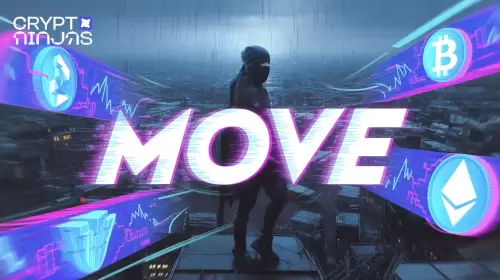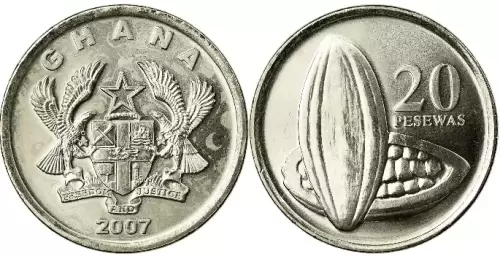 |
|
 |
|
 |
|
 |
|
 |
|
 |
|
 |
|
 |
|
 |
|
 |
|
 |
|
 |
|
 |
|
 |
|
 |
|
通常、FIAT通貨のような安定した資産に固定されている仮想デジタル資産(「VDA」)であるStablecoinsは、デジタルの礎石として認識されています

Stablecoins, which are typically virtual digital assets (VDA) pegged to stable assets like fiat currencies, are being recognised as the cornerstone of digital finance revolution, delivering a blend of traditional currency stability and decentralised innovation.
通常、Fiat通貨のような安定した資産に固定された仮想デジタル資産(VDA)であるStablecoinsは、デジタルファイナンス革命の礎石として認識されており、従来の通貨の安定性と分散型イノベーションの融合を提供しています。
As their global adoption accelerates - from everyday retail transactions/ cross-border remittances to institutional treasury operations - governments are realising that clear, forward-thinking regulation can foster innovation and help their economies stay ahead of the pack.
日常の小売取引/国境を越えた送金から機関財務省の運営まで、世界的な養子縁組が加速するにつれて、政府は、明確で先進的な規制が革新を促進し、経済がパックの先を行くのを助けることができることを認識しています。
In this FIG paper, we focus on the developments in the regulatory landscapes and use cases of stablecoins globally. Then, focussing on India, discuss how these use cases have been adapted to the existing regulatory framework, and reflect on the opportunities and hurdles for India to compete globally in this space, based on our learnings from both domestic and offshore VDA players.
このイチジクの論文では、規制環境の発展と、グローバルなスタブコインのユースケースに焦点を当てています。その後、インドに焦点を当て、これらのユースケースが既存の規制の枠組みにどのように適合しているかを議論し、国内およびオフショアのVDAプレーヤーからの学習に基づいて、インドがこの分野でグローバルに競争する機会とハードルを振り返ります。
Global Regulatory Landscape and Market Trends
グローバルな規制環境と市場動向
By December 2024, the market capitalisation of Stablecoins had touched USD 205 billion, competing strongly with mainstream financial products. As a result, governments across the world are rolling out frameworks for stablecoins backed by currencies.
2024年12月までに、Stablecoinsの時価総額は2,000億米ドルに触れ、主流の金融商品と強く競い合いました。その結果、世界中の政府は、通貨に支えられたスタブコインのフレームワークを展開しています。
United States of America (USA)
アメリカ合衆国(アメリカ)
Following the Trump administration’s pro-crypto mandate, the US Congress is debating new stablecoin legislation, i.e., the “Guaranteeing Electronic Neutrality, Innovation, and US Stability” (GENIUS) Act in the Senate and the “Stablecoin Tethering and Bank Licensing Enforcement” (STABLE) Act in the House that mandate 1:1 reserve backing, transparent audits, redemption rights, and compliance with anti-money laundering (AML) requirements.
米国議会は、トランプ政権の親権者の命令に続いて、新しい安定性の法律、つまり「電子中立性、革新、米国の安定性の保証」(天才)法(天才)行為、および「安定したテザリングと銀行ライセンス執行」(安定)の「安定した銀行のライセンス」(Stable)は、その命令1:洗濯(AML)要件。
The US Securities and Exchange Commission (“SEC”) has issued a statement, indicating that stablecoins (backed by low-risk, liquid assets) do not constitute securities, prompting the SEC to drop its longstanding civil lawsuits against exchanges Ripple, Coinbase, and Kraken.
米国証券取引委員会(「SEC」)は声明を発表しました。これは、Stablecoins(低リスクの液体資産に裏打ちされた)は証券を構成しないことを示しており、SECが交換の波紋、コインベース、Krakenに対する長年の民事訴訟を取り下げるよう促しています。
As a result of, large corporations and banks are now backing innovation in stablecoin, by launching use cases for cross-border remittances, B2B payments, collateral in lending protocols, and payment network cards linked to stablecoin wallets.
結果として、大企業と銀行は現在、国境を越えた送金、B2B支払い、貸出プロトコルの担保、およびStablecoinウォレットにリンクされた支払いネットワークカードのユースケースを開始することにより、Stablecoinのイノベーションを支持しています。
European Union (EU)
欧州連合(EU)
The EU introduced the Markets in Crypto-Assets (“MiCA”) regulation to govern, inter alia, e-money tokens (i.e., fiat-backed stablecoins), asset-referenced tokens (i.e. liquid asset backed stablecoins) and algorithmic crypto-assets (stablecoins that maintain value by deploying an algorithm to increase/ decrease supply based on demand). MiCA aims to unify EU-wide rules, offering a “passport” to issuers who meet these requirements. This clarity has already led major stablecoin issuers, including Circle, Crypto.com, and Societe Generale, to seek authorisation in Europe.
EUは、クリプトアセット(「MICA」)規制で市場を導入し、インターアリア、電子マネートークン(すなわち、フィアットバックされたstablecoins)、資産参照トークン(すなわち、液体資産バックされたstablecoins)、およびアルゴリズムのクリプトアセット(アルゴリズムの潜水補給)(アルゴリスの補給を維持するための段階的補給を維持するため)を維持するための補給を維持します。 要求)。 MICAは、EU全体のルールを統一することを目指しており、これらの要件を満たす発行者に「パスポート」を提供します。この明確性により、すでにCircle、Crypto.com、Societe Generaleなどの主要なStablecoin発行者がヨーロッパで認可を求めています。
However, the mandate to actively maintain a proportional reserve of assets, subject to EU law (to cover market and currency risks), is causing issuers to reconsider operating in the EU, against more lucrative treasury options denominated in USD.
ただし、EU法の対象となる(市場と通貨のリスクをカバーするため)、比例した資産の準備金を積極的に維持する義務は、米ドルに派生したより収益性の高い財務オプションに対して、EUでの運営を再考することを引き起こしています。
United Arab Emirates (UAE)
アラブ首長国連邦(UAE)
In the UAE, the Abu Dhabi Global Market (ADGM) and Dubai’s Virtual Assets Regulatory Authority (VARA) mandate licensing, prudential requirements, and strong disclosures for stablecoin issuers. Sandboxing programmes help them test offerings in a controlled environment. The UAE’s strategic positioning as a financial hub has driven stablecoin usage in import-export payments and remittances throughout the Middle East and North Africa (MENA) region, including recent plans by the Abu Dhabi sovereign wealth fund ADQ, conglomerate IHC (IHC AD) and the UAE’s biggest lender by assets First Abu Dhabi Bank (FAB) to launch a dirham-backed stablecoin.
アラブ首長国連邦では、アブダビのグローバル市場(ADGM)とドバイの仮想資産規制当局(VARA)が、ライセンス、プルデンシャル要件、およびStablecoin発行者の強力な開示を義務付けています。サンドボクシングプログラムは、制御された環境で提供をテストするのに役立ちます。金融ハブとしてのアラブ首長国連邦の戦略的ポジショニングは、中東および北アフリカ(MENA)地域全体の輸出入支払いと送金における安定した使用を推進しました。
Singapore & Japan
シンガポールと日本
The Monetary Authority of Singapore has established a licensing regime for single currency stablecoins (SCS) and prescribed requirements for maintaining asset reserves (such minimum base capital and liquid assets). Interestingly, Singapore is seeing collaboration between stablecoin issuers and major digital payment brands, enabling stablecoin-based “purpose-bound money” for e-commerce and cross-border remittances.
シンガポールの金融当局は、単一通貨の安定コイン(SCS)のライセンス制度を確立し、資産埋蔵量(このような最低基本資本と液体資産)を維持するための規定の要件を設立しました。興味深いことに、シンガポールは、Stablecoin発行者と主要なデジタル決済ブランドとのコラボレーションを見ており、eコマースと国境を越えた送金のためのStablecoinベースの「目的のお金」を可能にします。
Japanese local banks have explored issuing stablecoins for domestic payments, and stablecoin usage is growing in areas like e-commerce, though adoption remains carefully overseen by the Japanese regulator, i.e., Financial Services Agency.
日本の地元の銀行は、国内の支払いのための安定コインの発行を探求しており、eコマースのような分野では安定した使用が増加していますが、養子縁組は日本の規制当局、すなわち金融サービス機関によって慎重に監督されたままです。
Stablecoin Use Cases in India – Legal & Regulatory Considerations
インドのStablecoinユースケース - 法的および規制上の考慮事項
In recent years, stablecoins have become increasingly popular among Indian retail and institutional participants as users are seeking lower-risk on-chain exposure and aligns with the core proposition of stablecoins: a token pegged 1:1 to a reference asset (and is accordingly backed to maintain that value). While use cases for facilitating payments are limited on account of VDA not being legal tender in India, three primary use cases have emerged.
近年、ユーザーが低リスク上のチェーン曝露を求めており、スタブコインのコア命題と一致しているため、インドの小売業者と機関の参加者の間でスタブコインがますます人気が高まっています。インドではVDAが法定通貨ではないため、支払いを促進するためのユースケースは限られていますが、3つの主要なユースケースが登場しています。
1. Portfolio Investment
1。ポートフォリオ投資
Unlike most crypto tokens, stablecoins aim to “lock in” their value by holding a reserve of low-volatility assets, such as US Treasury bills or other cash equivalents, to back each token. These features of stability and liquidity capacity drove Indian customers to
ほとんどの暗号トークンとは異なり、Stablecoinsは、米国財務省やその他の現金同等物などの低揮発性資産の予備を保持して、各トークンを裏付けることにより、価値を「ロックイン」することを目指しています。安定性と流動性能力のこれらの機能により、インドの顧客は
免責事項:info@kdj.com
提供される情報は取引に関するアドバイスではありません。 kdj.com は、この記事で提供される情報に基づいて行われた投資に対して一切の責任を負いません。暗号通貨は変動性が高いため、十分な調査を行った上で慎重に投資することを強くお勧めします。
このウェブサイトで使用されているコンテンツが著作権を侵害していると思われる場合は、直ちに当社 (info@kdj.com) までご連絡ください。速やかに削除させていただきます。






















![[2025.05.08]ビットコインの2つのルートは引き続き観察されており、金はまだ強気です。 [2025.05.08]ビットコインの2つのルートは引き続き観察されており、金はまだ強気です。](/uploads/2025/05/08/cryptocurrencies-news/videos/routes-bitcoin-continue-observed-gold-bullish/image_500_375.webp)






































